SAP is good... but not for everyone: 6 alternatives you need to know about
SAP reigns supreme in the ERP world... but is it always deserved?
Let's face it, the German solution remains a behemoth. Ultra-complete, yes. But also ultra-complex, and often reserved for very large organizations willing to devote time, budget and entire teams to it.
The good news is that SAP is no longer the only serious option on the market, and new players have emerged who are more agile, more accessible and sometimes even smarter. And some old rivals have modernized.
In this article, we guide you through 6 must-know alternatives to SAP, depending on the size of your company, your business challenges and your level of patience (because not everyone has 18 months to devote to an ERP rollout...).
What is SAP?
SAP is a bit like the boss of the game when it comes to ERP. Software that aligns processes, centralizes data and orchestrates the business machine like a well-oiled German symphony. It's powerful, robust and proven.
But SAP isn't just a plug-and-play application. It's a sprawling ecosystem that covers everything: finance, production, logistics, HR, purchasing, sales... All designed for international groups, with ultra-precise management requirements and often several entities to coordinate.
In concrete terms, SAP is aimed at large, and even very large, companies. We're talking here about multinationals or ETIs with heavy processes, solid IT teams and long-term structuring projects. Customers such as Airbus, Coca-Cola and Nestlé are no accident.
In terms of positioning, SAP plays the "best-of-breed" ERP card: all-in-one, but highly customizable. And that comes at a price: license, integration, maintenance... We're entering the heavyweight category here, both functionally and financially.
Key SAP features
SAP is the Swiss Army Knife of the modern enterprise. Everything is there - provided you have the means (and the time) to unfold it all. Here are the functional pillars that make SAP an ERP as indispensable as it is imposing:
- State-of-the-art financial and accounting management
SAP centralizes all accounting, budgeting and tax flows in a single repository, with powerful multi-company consolidation and reporting functions. - Supply Chain Management
From inventory forecasting to production planning, SAP synchronizes logistics flows to meet customer demand as closely as possible. - Human Resources Management (HCM)
Recruitment, payroll, talent management, HR compliance... SAP offers a complete module for monitoring employee life from A to Z. - Controlling and integrated analytics
With SAP Analytics Cloud, users gain access to powerful dashboards, real-time KPIs and predictive scenarios. - Business process automation
SAP embeds intelligent workflows to automate critical tasks: approvals, dunning, expense validation... - Flexibility and extensive customization
Almost anything can be configured. But this requires a solid project phase... and sometimes a good integrator partner.
👉 In short, SAP does everything, but never does it by halves. This is both its strength... and its complexity.
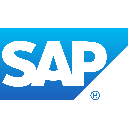
SAP ERP
Why consider an alternative to SAP?
Let's not beat around the bush: SAP is a Rolls-Royce, but not everyone needs an armored limousine to buy bread. That's why so many companies - SMEs and large corporations alike - are now looking to get out of the SAP ecosystem, or avoid it altogether from the outset.
✅ What SAP does (very) well
- Monumental functional coverage, capable of managing almost all the business processes of a multinational.
- Rock-solid reliability: critical errors are rare, and regulatory compliance is top-notch.
- Scalability designed for large accounts with multiple entities, countries, currencies and business constraints.
- A vast, structured, experienced ecosystem of partners and integrators.
❌ Where SAP can get stuck
- High total cost of ownership: licenses, integration, support, maintenance... the entry ticket is solid.
- Long, complex deployment: often allow 12 to 24 months, sometimes more, for a complete project.
- Steep learning curve: SAP's interface and logic are unintuitive for the uninitiated.
- Rigid adaptability: everything is possible, but rarely simple or quick.
- Less suited to SMEs or fast-growing structures looking for agility and simplicity.
👉 In short, SAP remains a benchmark solution... but not a universal panacea. Other ERP or specialized tools tick the right boxes with greater flexibility and a more digestible budget.
Comparison table of the 7 best alternatives to SAP
Before delving into the details, we'd like to give you a quick overview of the best alternatives to SAP. This table enables you to compare at a glance the main orientations of each solution: target, positioning, and ideal use cases.
1 of 7
 SAP ERP | 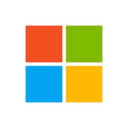 Microsoft 365 | 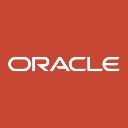 Oracle ERP Procurement Cloud | 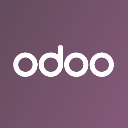 Odoo | 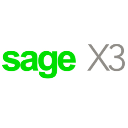 Sage X3 ERP |  Anaplan |  Board |
|---|---|---|---|---|---|---|
| For all companies | For all companies | For companies with more than 1 employees | For companies with more than 1 employees | For all companies | For companies with more than 50 employees | For all companies |
| See software | See software | See software | See software | See software | See software | See software |
| Learn more about SAP ERP | Learn more about Microsoft 365 | Learn more about Oracle ERP Procurement Cloud | Learn more about Odoo | Learn more about Sage X3 ERP | Learn more about Anaplan | Learn more about Board |
Our selection of SAP alternatives for large enterprises
Microsoft Dynamics 365 Finance & Operations
Microsoft may not have invented ERP, but it has certainly modernized it with Dynamics 365 Finance & Operations. Designed for large companies, this tool combines the reliability of a large-scale ERP with the agility of the cloud and modular flexibility.
It includes all the classic ERP building blocks (finance, purchasing, supply chain, production), boosted by AI, with true integration with Microsoft 365 tools (Teams, Excel, Power BI). All this in an interface that's more intuitive than SAP's... and often better received by teams.
Another advantage: Dynamics 365 is entirely cloud-native, making it faster to deploy and easier to upgrade over time.

Microsoft 365
Key functionalities
- Advanced financial and accounting management, multi-currency, multi-entity
- Accounting automation tools with integrated AI
- Real-time supply chain management (inventory, production, forecasts)
- Integrated predictive analysis via Power BI
- Native integration with Microsoft tools (Excel, Teams, Outlook...)
- Modular architecture (you only activate what you use)
👉 Our opinion
A serious alternative to SAP, more modern, more fluid and less rigid. Dynamics 365 appeals to finance and IT departments alike, not least because of its ability to evolve rapidly. Be careful, however, to anticipate integration and train your teams well: the tool remains dense and structuring. But in terms of ROI, many find it more profitable than SAP over 3 to 5 years.
Oracle Fusion Cloud ERP
Oracle doesn't do things by halves, and its next-generation cloud ERP proves it. Oracle Fusion Cloud ERP is aimed at large enterprises looking to modernize their financial, operational and analytical management - while leveraging automation and integrated AI.
The platform is 100% cloud-based, designed for complex, multinational environments. It covers a broad functional spectrum: finance, purchasing, projects, supply chain, HR performance, and much more. All with a modular approach to avoid "big bang" deployments.
It's also one of the most advanced ERPs in terms of machine learning, with financial prediction, anomaly detection and intelligent recommendations.

Oracle ERP Procurement Cloud
Key functionalities
- Automate financial processes (closing, expenses, compliance)
- Global purchasing, contract and supplier management
- Digital supply chain: planning, production, delivery
- Embedded analytics and dynamic dashboards
- Native integration with Oracle HCM, EPM and CX
- Integrated AI & ML for proactive decision-making
👉 Our opinion
Oracle is hitting hard with an ultra-complete cloud ERP, designed for large international structures. The functional richness is impressive, and the integrated AI clearly makes the difference for CFOs and CIOs who want to anticipate rather than undergo. The only drawback: the learning curve is steep, and the budget can quickly climb if all modules are activated. Best reserved for mature organizations... with the right support.
Our selection of alternatives to SAP for SMBs and SMEs
Odoo
Odoo is the underdog that's making a lot of noise - and not by chance. This open source ERP from Belgium has achieved a rare feat: making business management modular, intuitive and accessible.
Originally designed for small and medium-sized businesses, Odoo has evolved considerably over the years, and now also appeals to large and medium-sized companies thanks to its all-in-one approach, modern interface and, above all... unbeatable price. You'll find modules to manage just about everything: CRM, sales, purchasing, accounting, HR, e-commerce, and more.
And the icing on the cake: the Odoo community is extremely active, with thousands of extensions available and an ecosystem of integrators just about everywhere.

Odoo
Key features
- Modular ERP: activate only the apps you need
- Complete sales management: quotations, invoicing, inventory, purchasing
- Integrated accounting (with tax localization by country)
- Native CRM and integrated marketing tool
- Modern, easy-to-use interface
- Marketplace rich in third-party apps
👉 Our opinion
Flexible, affordable and quick to deploy, Odoo ticks a lot of boxes for growing SMEs and ETIs. It's not a miniature SAP, but it's often more than enough to structure a business without blowing your budget. Beware, however, of complex integrations or ultra-specific requirements: you can quickly reach the limits of the model without a good tech team behind you.
Sage X3
Sage X3 joins the club of serious ERP systems... but without becoming a gas factory. This software developed by Sage is aimed at small and medium-sized industrial, commercial and agri-food companies looking to manage their operations with a complete ERP, without losing their sanity (or their budget).
Sage X3 is positioned between agility and robustness. It offers great functional depth - accounting, financial management, production, inventory, purchasing, sales, etc. - while remaining faster to deploy. - while remaining faster to deploy and learn than SAP or Oracle.
A real asset for structures that need an international ERP, but without excessive complexity.

Sage X3 ERP
Key functionalities
- Multi-company, multi-currency financial management
- Supply chain management (purchasing, inventory, sales)
- Production management and traceability (especially for the agri-food industry)
- Integrated CRM and project management functions
- Native web access, customizable interface
- Adapted to local accounting and tax standards
👉 Our opinion
Sage X3 is an ERP that knows how to stay in its place: complete enough to support growth, without becoming ultra-complex. It's a good compromise for SMEs who want a solid tool, without the cost or complexity of SAP. On the other hand, you need to choose your integrator carefully: the user experience depends a great deal on deployment.
Our selection of SAP alternatives to combine
Anaplan
Anaplan is the secret weapon for finance and operations managers in search of agile planning. It's not an ERP per se, but a Connected Planning platform, designed to complement behemoths like SAP or Oracle - often where they sin: real-time planning, simulation and collaboration.
Thanks to its ultra-powerful modeling engine (the famous Hyperblock™), Anaplan makes it possible to create complex scenarios, dynamic financial forecasts, and connect decisions at all levels of the enterprise.
It's a particularly relevant choice for large companies that want to gain agility without replacing their ERP.

Anaplan
Key functionalities
- Financial, operational, sales and HR planning
- Real-time "what if" scenarios, forecasts and simulations
- Multi-team collaboration with shared model logic
- High-performance calculation engine (Hyperblock™)
- Integration with SAP, Oracle, Salesforce...
- No-code interface for easy model creation
👉Our opinion
Anaplan is not an ERP... but it makes it better. For large groups who need to model quickly, simulate budgets or align finance and operations, it's a formidable ally. Its cloud-first, collaborative approach fills the agility gaps left by traditional ERPs. The only limitation: this level of power comes at a price, and requires good project management to get the best out of it.
Board
Board is the Swiss Army knife of BI and planning. Not quite an ERP, not quite a stand-alone tool, but an intelligent hub that centralizes your data, automates your budgets, and aligns strategy and execution.
Designed for finance, sales and HR departments, Board combines business intelligence, planning and simulation in a single interface. The goal? To help companies make faster, more reliable, more connected decisions.
Its great strength: the ability to cross-reference data from your ERP (SAP, Oracle, Sage, etc.) to generate dashboards, budget plans or scenario simulations.

Board
Key functionalities
- Business Intelligence: reporting, dashboards, real-time KPIs
- Strategic, budgetary, sales and HR planning
- What if" modeling, dynamic forecasts
- Collaborative workflow and validation management
- Native ERP connectors (SAP, Oracle, etc.)
- Intuitive, customizable interface
👉 Our opinion
Board is the co-pilot your ERP is missing. Where SAP or Dynamics set the framework, Board helps you optimize it, simulate it and make decisions. The tool shines particularly brightly in performance management, without requiring a dedicated BI team. Its main challenge? Structuring data governance upstream to avoid getting lost in the infinite possibilities.
Summary table: focus on functionalities of SAP alternatives
| Software | Type of user | Strengths | Key features | Cost of entry |
| Anaplan | Large companies | Agile planning, collaboration | Forecasting, scenarios, Connected Planning, ERP integration | On quotation |
| Board | Large companies / ETI | BI + planning, intuitive interface | Budgets, simulation, reporting, KPIs, SAP/Oracle connectors | On request |
| Microsoft Dynamics 365 F&O | Large enterprises | Modular, cloud-native, MS integration | Finance, supply chain, AI, analytics, Microsoft 365 integration | Approx. €180/user/month |
| Odoo | SME / ETI | Affordable, modular, quick to deploy | CRM, accounting, billing, HR, sales, e-commerce | From €25/util/month |
| Oracle Fusion Cloud ERP | Large enterprises | Comprehensive, embedded AI | Finance, purchasing, supply chain, AI/ML, analytics, HR | On quotation |
| Sage X3 | Industrial SME / ETI | Solid, adaptable, strong localization | Finance, production, inventory management, CRM, multi-company | On quotation |
* Indicative prices observed on publisher or reseller sites. Varies according to modules, number of users and integrations.
How to choose your ERP software?
Choosing an ERP (or an alternative to SAP) is a bit like choosing a house: it all depends on your budget, the size of your family (understand: your business) and your plans for the future. Here are the main criteria to keep in mind before signing.
1. Identify your real needs (not the neighbor's)
There's no point in copying the setup of a large group if you're a 50-strong SME. List your critical processes (accounting, production, sales, supply chain...) and focus on what will really save you time or reduce errors.
2. Evaluate the solution's scalability
Your ERP must be able to keep pace with your growth, without having to redo everything in two years' time. Modular or scalable tools (such as Odoo, Dynamics 365 or Sage X3) are preferable if you're expanding rapidly.
3. Think about integration with your ecosystem
A good ERP is also a well-connected ERP . Check that it integrates easily with your business tools (CRM, e-commerce, BI, etc.), and that it has open APIs or native connectors.
4. Don't neglect UX and team adoption
An ERP, no matter how powerful, is useless if nobody uses it. The interface, the ease of use and the quality of user support must weigh heavily in the balance.
5. Make your calculations: TCO > entry price
The advertised price is only the tip of the iceberg. Include hidden costs (integration, training, maintenance, upgrades) to calculate the total cost of ownership (TCO) over 3 to 5 years.
Article translated from French